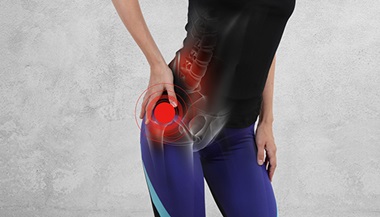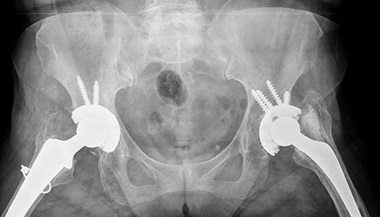Hip Impingement
What You Need to Know
- The exact cause of hip impingement is usually unknown.
- There are two main types of hip impingement defined by where deformity occurs in the joint: the femoral head or acetabulum.
- A physical exam, X-rays and oftentimes an MRI scan are required to diagnose hip impingement.
- Nonoperative and surgical treatment options are available to treat hip impingement.
What is hip impingement?
Hip impingement, or femoroacetabular impingement (FAI), occurs when the femoral head (ball of the hip) pinches up against the acetabulum (cup of the hip). When this happens, damage to the labrum (cartilage that surrounds the acetabulum) can occur, causing hip stiffness and pain, and can lead to arthritis.
Types of Hip Impingement
There are two main types of FAI. The first is caused by a deformity of the femoral head (ball). In this type of impingement, the ball has a more oval than round appearance. This shape creates friction when the ball hits the edge of the cup. The second type of impingement occurs when the acetabulum (cup) is abnormally shaped. The cup may cover the head of the femur too much, creating friction when the edge of the cup hits the head/neck of the femur. It is also possible to have a combination of these two types.
What are the signs and symptoms of hip impingement?
Most patients with FAI experience pain or stiffness in the groin or front of the thigh. This often occurs or is made worse with bending up of the hip or at the waist, such as when riding a bike, tying shoes or sitting for long periods of time.
What are the risk factors for hip impingement?
For many people, the abnormal shape is thought to have been present since birth. It is also possible to develop this abnormal shape over time and is seen more frequently in young athletes that participate in sports involving a lot of twisting of the hip and squatting. Some conditions, such as slipped capital femoral epiphysis can cause this abnormal shape.
Hip Impingement Diagnosis
The diagnosis is based on a number of factors, including history, physical exam and imaging. X-rays will need to be done, including special views that evaluate for this abnormal shape. You will most likely need to get these special views during your visit unless they have already been done by another hip specialist. An MRI scan is often required to evaluate the soft tissue in the hip.
Hip Impingement Treatment
Nonsurgical Treatment
Your doctor may first recommended conservative treatment, such as rest, activity modification, anti-inflammatory medications and sometimes physical therapy. However, if your pain does not improve with these interventions, you may be a candidate for surgery.
Johns Hopkins Hip Preservation Clinic

Surgical Treatment
There are two main goals of surgical treatment in FAI. The first is to address the damaged portion of the hip joint. This may involve repairing or removing damaged tissue. The second is to correct or improve the abnormal shape of the hip joint. This is often done arthroscopically by removing some of the extra bone. This involves small incisions and narrow instruments, and the surgeon will use a camera to look inside the hip. However, if your surgeon feels you need a more extensive, open procedure, it would involve larger incision sites, a two- to four-day hospital stay and crutches for six to eight weeks.






